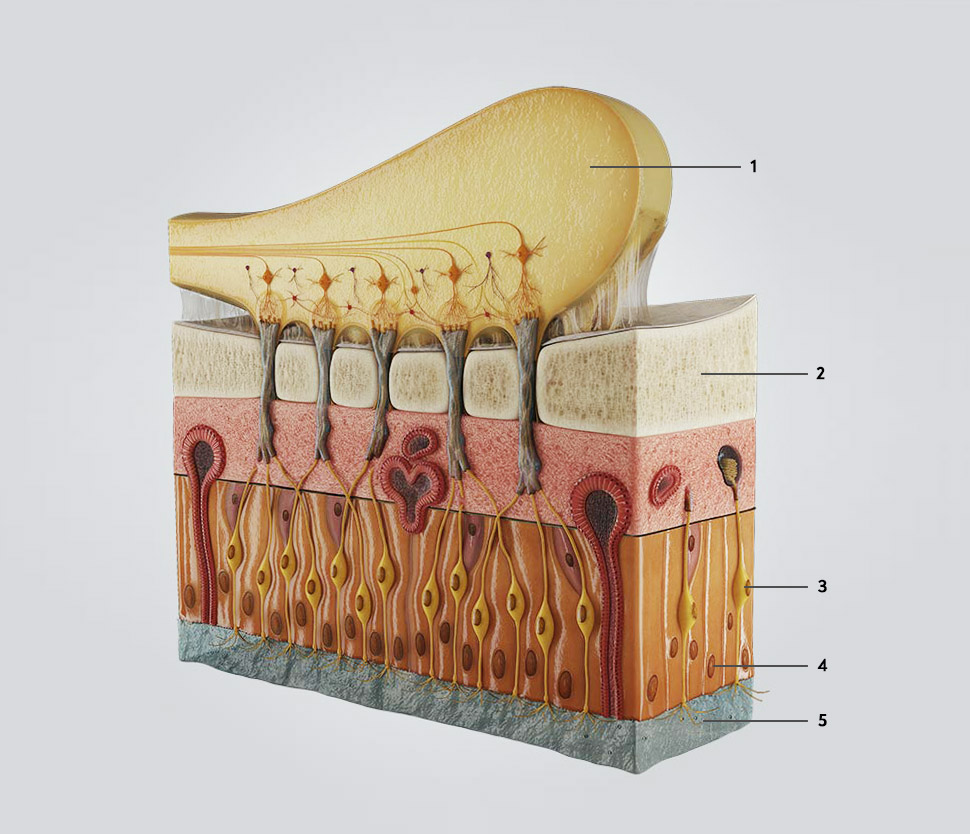 1: olfactory bulb, 2: ethmoid bone, 3: olfactory sensory neurons, 4: columnar supporting cells, 5: mucus
1: olfactory bulb, 2: ethmoid bone, 3: olfactory sensory neurons, 4: columnar supporting cells, 5: mucus
The sense of smell is managed by your olfactory epithelium (OE) at the top of your soft palate. The outside of the OE is coated in millions of cilia, which are little ‘hairs’ that extend from out of olfactory sensory neurons (OSN). Humans have between 10–20 million OSNs, and every individual OSN has receptors for just one kind of smell (Saladin and Kenneth, 2012).
After a specific threshold of smell is reached (where there are enough molecules of a particular aromatic compound present), a signal known as an action potential is sent to the brain. Action potentials travel along through unique strands called axons towards the brain. Coffee contains more than 700 aromatic compounds (Blank et al, 1992); this means a huge number of OSNs will be transmitting information simultaneously. The olfactory system has a kind of prefilter, the olfactory bulb, which amalgamates the information from many separate neurons involved in detecting smells. If for example a food or beverage like coffee is giving off many separate VOCs simultaneously, it is in the olfactory bulb where this bundle of information is organised.
The olfactory bulb is located on the upper side of the bone that separates your soft palate (the top of the inside of your nose) from your brain. Inside the olfactory bulb is the hub where axons link up, called the glomerulus. From here, signals are sent along mitral cells to the parts of the brain that process smell.
Information about smells arrives first at the olfactory cortex. The olfactory system initiates two other regions of the brain to help process the information: The cerebral cortex, at the front of the brain, identifies what kind of smell has been detected. The other part of the brain that helps to process smells is the limbic system which controls our memory.